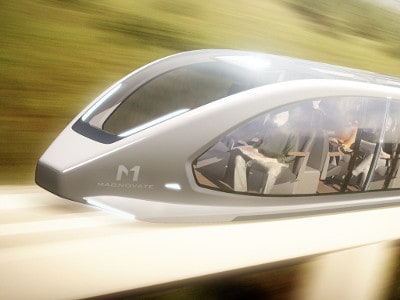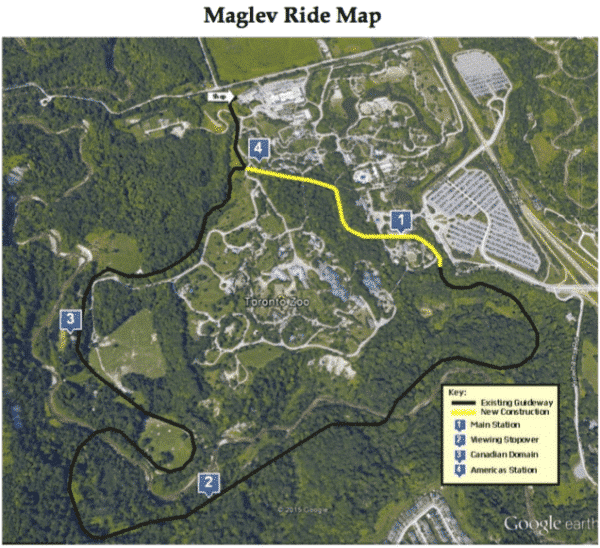Will a magnetic levitation train fly at the Toronto Zoo?

 The Toronto Zoo board of management have responded unanimously in the affirmative to an unsolicited proposal from Edmonton company Magnovate for a $25 million magnetic levitation train, also known as maglev, that would occupy the old five-kilometre monorail track that used to run through the zoo grounds but stopped in 1994 following an accident.
The Toronto Zoo board of management have responded unanimously in the affirmative to an unsolicited proposal from Edmonton company Magnovate for a $25 million magnetic levitation train, also known as maglev, that would occupy the old five-kilometre monorail track that used to run through the zoo grounds but stopped in 1994 following an accident.
Maglev trains are the same type as Japanese shinkansen, or high-speed bullet trains, that have operated between major cities since 1979.
Running at a mere 30-35 kilometres per hour speed, Magnovate’s zoo project is obviously not built to demonstrate that it can equal the 500-600 kilometre per hour speeds that can be achieved by Japan’s shinkansen.
Magnovate intends to raise $10 million for the zoo project from government grants, while the remainder will be raised through private sources.
The company is proposing that the maglev train would operate as a ride ferrying the public around the zoo’s grounds, for a $12 admission fee, with revenues split between the zoo and Magnovate for the first five years, at which point the zoo would assume full ownership of the maglev train.
Magnovate sent in the unsolicited proposal because the already existing monorail infrastructure means that a new track won’t need to be built, and that having a proof-of-concept functioning maglev train will help the company convince municipalities and government agencies to consider building maglev train routes between Canadian urban centres.
The fares for Japanese bullet trains aren’t cheap, but they do certainly justify that expense by turning what would have been a full-day trip between Aomori and Tokyo or Tokyo and Okayama to a matter of two or three hours, experienced on an extraordinarily quiet train car which can only be described as flying on the ground, complete with popping ears.
Despite their origins in the late 1970s, the Japanese trains have an ultramodern feel, like society’s collective imagination of what the future was going to be like back then, as expressed by Expo ’67 or futuristic TV shows of that era.
Magnovate has also proposed a maglev rail closer to home, at the University of Alberta, but was told by Sustainable Development Technology Canada that they’d be more likely to get funding if they find a host site that would more credibly demonstrate a commercial deployment.
The Toronto Zoo’s original monorail opened in 1976 and was a popular method for visitors to move around the expansive grounds, until one accident that injured nine people in 1991 was followed by another more serious 1994 accident injuring 27 people, which resulted in a $43,000 fine from the Occupational Health and Safety Act, shutting the attraction for good.
Japan’s trains are not the same technology as, but do feel a lot like, Europe’s high-speed TGV trains that run between Paris and London, or from Lille to Brussels and on to Amsterdam.
While the Toronto Zoo project is an interesting test case for demonstrating the feasibility of bringing high-speed rail to Canada, it’s an open question whether visitors who have already paid zoo admission will shell out an additional $12 to ride a maglev train, given that a theme park such as Epcot Centre includes the cost of its monorail transport in its admission fee.


Terry Dawes
Writer
